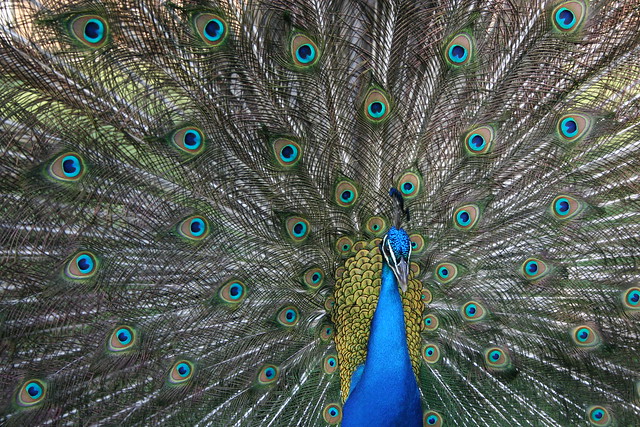We have a new paper out!
In this study we describe the rapid feather vibrations that peacocks use during courtship. These vibrations – at a rate of about 26 Hz on average – represent a substantial mechanical and metabolic challenge for the birds, especially given that they are performed using a massive array of feathers with widely varying lengths.
A peacock shows his stuff. His train feathers range from 10 cm to > 150 cm in length, and the whole thing weighs about 300 g. Photo by Roslyn Dakin.
We recorded high speed videos of peacocks displaying in the field. We also used lab experiments to test whether the peacocks move their feathers at resonance (which would be an efficient strategy), and to understand how the colourful eyespots can remain so steady during these vibrations. One surprising result was that the peacocks with the longest trains actually used slightly higher vibration frequencies overall – making their displays a greater challenge to perform. The next step is to understand how these feather motions influence the iridescent colour patterns as viewed by the peahens (the females), and ultimately, the hens’ choice of a mate.
Media coverage has been great – here are a few of my favourites:
- This delightfully nerdy video made by the New York Times, using my field recordings
- This article in Gizmodo
- My coauthor Suzanne was fantastic on Quirks and Quarks
…and Suzanne reports that her husband met a couple in the Netherlands who had just read about our study in that newspaper. Pretty gratifying to hear that!
The videos associated with the paper are available here.
From May 2, 2016
